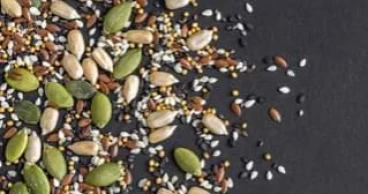nutrition
Beat Dehydration with These Summer Vegetables
As the temperatures soar during the scorching summer months, it becomes increasingly crucial to prioritise hydration. Dehydration occurs when the body loses more fluids than it takes in. Dehydration may lead your body to adverse effects ranging from fatigue and headaches to more severe complications like heatstroke. While it is common knowledge to increase water intake during hot weather, many overlook the hydrating potential of the summer vegetables.
Why Incorporate Summer Veggies into Your Diet
Maintaining adequate hydration levels is crucial for maintaining overall health and well-being. Water is essential for regulating body temperature, aiding digestion, transporting nutrients, and flushing out toxins. Dehydration can lead to a range of adverse effects, including fatigue, headaches, dizziness, and even more severe complications like heatstroke.
By staying adequately hydrated, you can enhance cognitive function, improve physical performance, and support organ function. Make it a priority to drink water regularly throughout the day to ensure optimal hydration and vitality, especially in the summer heat.
Read more: How to Protect Your Skin and Hair from Sun Damage
Summer veggies are rich in diverse vitamins and nutrients. Adding vegetables to regular meals can help you stay hydrated and healthy during the warmer months. Let’s take a look into some nutritious summer veggies to fight dehydration this summer.
Nutritious Summer Vegetables to Beat Dehydration
.
Cucumber
Cucumbers are hydrating vegetables packed with nutrients like vitamins A, B, and C, along with minerals such as potassium and magnesium. With a water content over 95%, they replenish lost fluids and electrolytes, aiding hydration.
Enjoy cucumbers sliced in salads, sandwiches, or refreshing cucumber mint smoothies for a hydrating boost. Incorporating cucumbers into your diet regularly can promote skin health, aid digestion, and support overall well-being. Aim for at least one or two cups of cucumber daily to reap its hydrating benefits.
Read more: Summer Safety Tips for Elderly to Avoid Heat-related Illnesses
Tomatoes
Tomatoes are hydrating vegetables boasting a water content of around 94%. Rich in vitamins A and C, along with antioxidants like lycopene, they support immune function and promote heart health. You may incorporate tomatoes into your diet to enjoy their hydrating benefits.
Try them tossed in salads or sandwiches, blended into soups, or roasted with herbs for a flavourful side dish. It is recommended to include 1 or 2 tomatoes in your meals regularly to hydrate your body and boost your health.
Bell Peppers
Bell peppers, with a water content of approximately 92%, are hydrating vegetables rich in vitamins A, C, and K, as well as antioxidants. They support immune function, promote healthy vision, and reduce inflammation. You can incorporate bell peppers into your meals to enjoy their hydrating benefits.
Read more: 7 Comforting Soups for Upset Stomach
Add them to stir-fries, salads, or stuffed pepper recipes for a colourful and nutritious dish. Experts suggest limiting having one bell pepper in a day in your diet to stay hydrated and nourished, especially during hot weather without causing bloating or gas.
Lettuce
Lettuce varieties like iceberg and romaine are primarily composed of water. It is a hydrating vegetable that provides essential nutrients like vitamins A, K, and C, as well as folate and iron. It supports healthy skin, boosts immunity, and aids digestion.
Try to include lettuce in your diet for hydration and nutrition. Use it as a base for salads, wraps, or sandwiches for a refreshing and low-calorie meal option. Enjoy lettuce regularly to stay hydrated and promote overall well-being, aiming for around or less than two cups of green leaf lettuce per day.
Read more: 5 Mouth-watering Mango Pickle Recipes to Cherish This Summer
Spinach
Spinach, packed with water, is a hydrating vegetable loaded with vitamins A, C, and K, along with iron, potassium and folate. It supports bone health, boosts immunity, and aids in blood clotting.
Add one handful of spinach daily into your diet for hydration and nutrition. Add it to salads, smoothies, or cooked dishes for a nutritious boost. These can help you to stay hydrated and reap its numerous health benefits.
1 year ago
Microgreens: Nutrition, Health Benefits, and How to Grow
In a world where healthy eating and sustainable farming practices are gaining prominence, microgreens emerge as a nutritional powerhouse and an excellent addition to any diet. These tiny greens not only pack a punch in terms of health benefits but also offer a cost-effective solution for farming enthusiasts. This article will delve into the world of microgreens, their origins, health advantages, nutritional components, and how one can cultivate them in our country.
What are Microgreens?
Microgreens are the young, edible seedlings of various vegetables and herbs, tracing their roots back to California in the 1980s. Far from accidental, their invention resulted from meticulous research aimed at maximising the nutritional value of plants in their early growth stages.
Harvested at around 1-3 inches tall, one week aged, these tiny greens offer an incredible concentration of flavour and nutrients. They often contain 40 times more nutrients than their mature counterparts, making them a popular choice for those seeking both taste and health benefits. Easy to cultivate at home, microgreens have become a trendy and versatile culinary delight.
Read more: 10 Types of Natural Honey: A Guide to Varieties, Benefits, and Uses
Nutritional Components of Microgreens: Superfood of the Future
These seedlings are rich in a bunch of vitamins including Vitamin C, Vitamin K, Protein, Carbohydrates, Fibre, Sodium, Iron, Selenium, Magnesium, Manganese, etc.
Due to the high nutritional value, microgreens are also referred to as "superfood".
1 year ago
10 Tasty Drinks to Boost Kids' Immunity This Winter
As winter rolls in, it brings cold waves and fog. In chilly weather, kids may catch cold and fall ill more frequently. However, there are some secret weapons to combat these seasonal maladies: immunity-boosting winter drinks! Discovering tasty and healthy options to fortify children's immunity can make winter an enjoyable journey. Let's explore palatable winter drinks that not only tantalise the taste buds of children but also serve as shields against sickness during the cold months.
10 Delicious Immunity-Booster Winter Drinks for Children
Turmeric Milk
Turmeric milk is known for its medicinal properties. This drink blends the beneficial properties of turmeric and warm milk. To prepare, heat a cup of milk first. Then add half a teaspoon of turmeric powder, a pinch of black pepper, and a dash of honey to the milk. Simmer the mixture for a few minutes, then strain before consumption.
This golden elixir boasts curcumin which is renowned for its anti-inflammatory and antioxidant properties. Consuming turmeric milk helps bolster the immune system, aiding in the prevention of winter ailments like colds and flu. Its natural healing properties provide relief from sore throats, coughs, and other seasonal maladies.
Read more: 10 Types of Natural Honey: A Guide to Varieties, Benefits, and Uses
Vegetable Soup
Vegetable soup, a wholesome blend, incorporates an array of vegetables like carrots, spinach, tomatoes, and onions. Simmer these veggies in a broth, then season with some herbs and spices. This nutritious soup is filled with a plethora of nutrients, vitamins, minerals, and antioxidants, fortifying kids' natural immune systems and aiding in preventing colds and flu.
The warmth, nourishment, and hydration provided by this soup make it an appealing and immunity-boosting choice to keep kids healthy while relishing an appetizing meal.
Orange Carrot Juice
A vibrant and refreshing drink, orange carrot juice is a burst of immunity-boosting nutrients. Combine equal parts of carrot and orange juices for a rich blend of vitamin C and beta-carotene. These ingredients can fortify the immune system, essential in shielding kids from winter ailments.
Read more: Superfoods: Worth the Hype?
The juice's high vitamin content bolsters immunity, warding off cold and flu during colder months. The antioxidants in this juice act as a defence mechanism, aiding in preventing illnesses, while its delicious taste makes it kid-friendly.
Pumpkin Seed Milk
Pumpkin seed milk is another delightful way to keep winter ailments at bay for the little ones. This remedy involves blending soaked pumpkin seeds with water and straining the mixture. Rich in zinc, antioxidants, and omega-3s, it safeguards kids against winter sickness.
This nutritious vegan delight acts as a shield against seasonal ailments by fortifying the body's defence mechanisms. Its high zinc content aids in immune response, while antioxidants combat free radicals. Providing a wealth of nutrients, including magnesium and vitamin E, pumpkin seed milk contributes to overall health, offering an extra layer of winter protection.
Read more: Prospects of Safe Broiler Chicken Farming
Fruit Smoothies
Organic fruits are loaded with vitamins, antioxidants, and essential nutrients. Preparing smoothies involves blending a variety of fruits such as berries, bananas, and oranges, with a splash of yoghurt or milk. Each sip is a celebration of the body's strength.
The fruit medley provides a powerhouse of vitamins C and E, crucial for fortifying their defences and warding off colds. Its richness in antioxidants aids in fighting off infections, ensuring a tasty and convenient way for kids to stay healthier during colder months.
1 year ago
Healthy Alternatives to Cakes and Cookies: 7 Delicious and Nutritious Swaps
Cakes and cookies or biscuits, with their delightful flavors and textures, have carved a special place in the ever-evolving culinary culture. Their universal appeal transcends borders, making them beloved indulgences across the globe. However, beneath their sweet charm lie potential health concerns. This article explores the health risks of Cakes and biscuits, offering seven nutritious alternatives to satisfy your cravings.
Health Risks of Cakes and Cookies
Cakes and biscuits, though tempting, come with a set of health risks that should not be overlooked. Here are the key concerns:
High Sugar and Refined Flour Content
Cakes and cookies usually contain sugar and refined flour, causing rapid spikes in blood sugar levels.
Consistent high sugar consumption can lead to insulin resistance, paving the way for diabetes, obesity, high blood pressure, and heart disease.
Read more: Natural Sweeteners: 7 Healthy Alternatives of Refined Sugar
Saturated Fats and Cholesterol Levels
These baked foods often contain solid and highly saturated fats like butter and palm oil, which can increase low-density cholesterol levels.
Margarine or butter used in cakes can contribute to raised cholesterol levels in the blood.
Dental Issues
The sugary and starchy nature of cakes and cookies can contribute to cavities and dental problems over time.
Weight Gain
Cakes are rich in carbohydrates and fats, making them calorie-dense and conducive to weight gain.
Read more: 10 Best Teas for Weight Loss
Blood Glucose Spikes
Sugar is one of the most common ingredients used in baking cakes. The sugar in cakes can lead to higher blood glucose levels, increasing the risk of developing diabetes over time.
2 years ago
Top 10 Healthy Seeds to Eat
Nutrition plays significant roles for a human’s overall health and mental well-being. Adding seeds to one’s regular diet have numerous health benefits. Let’s discuss different types of seeds and their respective health benefits.
What Are Seeds?
All flowering plants reproduce through seeds. In simple words, a seed is the tiny, round or oval, hard component of a plant that works as the starting point of a new plant. More scientifically, a seed is a small embryonic ‘plant’, surrounded by a protective layer called the seed coat with certain reserved nutrients. In an appropriate environment, each seed has the potential to develop into a new plant.
How Seeds are Different from Nuts, Grains, and Beans
While many confuse seeds, nuts, grains, and beans; they are all different types of plant-based foods with unique characteristics. Though they share some similarities in terms of their nutritional content, they have differences.
Seeds are the reproductive parts of plants with high protein like chia seeds, sesame seeds. They are rich with healthy fats, fiber, vitamins and minerals.
Read More; Sweet Potato Health Benefits: The Organic Affordable Super Food
Nuts are the fruits of certain trees like almonds, peanuts. They are generally high with healthy fats, protein, fiber and various vitamins and minerals.
Grains are actually the seeds of grasses such as wheat, rice. They are a good source of carbohydrates, fiber, minerals and some essential vitamins.
Beans are the edible seeds of legume plants, such as lentils, kidney beans. Beans are nutritious with protein, fiber, various vitamins and minerals.
Each of these foods has unique properties that make them valuable additions to a healthy and varied diet.
Read More: Best and Worst Foods for Brain, Memory, Focus
How to Eat Seeds
Seeds are known as nutritional powerhouse. They are not just delicious and easy to consume but also convenient for people of all ages. Thus, just having proper digestion is not sufficient. It is vital to ensure that these nutrients are absorbed effectively by the body.
The next question that arises is the appropriate way to consume seeds. Eating them raw is the only way to derive nutrition from the seeds. It expands to soaked, ground or mashed particularly when added with other foods.
It is suggested to soak seeds overnight before consumption. Although soaking provides numerous benefits, the most significant is the removal of phytic acid found on them. Overnight soaking is the most effective method for this.
When selecting seeds, raw and unsalted varieties are recommended. Seeds, coated or roasted, or with added sugar coatings must be avoided.
read more: Natural Sweeteners: 7 Healthy Alternatives of Refined Sugar
10 Healthiest Seeds
Seeds may be small in size, but when it comes to nutrition it is packed with vitamins, minerals and healthy fats. This tiny powerhouse can provide the energy needed for the day ahead. In fact, seeds can be nutritious yet satisfying and a delicious filling snack. Here are the 10 healthiest seeds with benefits to boost overall health.
2 years ago
Jackfruit: Export Opportunities for Bangladesh's Economy
There is a reason why jackfruit is Bangladesh's national fruit. It grows in abundance across the country, particularly in the highland areas. Madhupur and Bhawal are among the top areas where jackfruit production is high. Once considered a backyard fruit, jackfruit now has the potential to become an export item - offering new economic opportunities and providing a sustainable food source for the population. In this article, we will explore how jackfruit can become a game-changer.
Why Jackfruit?
According to the Bangladesh Bureau of Statistics, about 1.5 million metric tons of jackfruit are produced in Bangladesh every year. Researchers observed that in the last few years, about 45% of this total production, i.e., about 5 lakh tons of jackfruit were wasted.
During jackfruit season, fruits like mango and litchi are available in the market, and it is difficult to process jackfruit for eating as compared to these fruits. Most people in Bangladesh think that jackfruit can only be eaten when it is ripe. There is a lack of interest in consuming unripe jackfruit. So a large part of the jackfruit produced in Bangladesh is wasted every year.
Read More: Delicious Jackfruit Recipes to Try Out Today
Keeping these issues in mind, researchers are trying to make food products with jackfruit that are easy to preserve for several months. Thus, they are aiming to reduce wastage and open up new economic prospects for the country.
Products Made Using Jackfruit
In recent times, various types of delicious foods are being prepared from jackfruit in Bangladesh, which includes jackfruit jam, pickles, chutney, chips, cutlets, ice cream, curd, ready-to-cook jackfruit, fresh cut (vegetable meat), jackfruit powder, and various other packaged products. Bangladesh Agricultural Research Institute has developed these products for the first time in Bangladesh. Customers can find these products in several supermarkets and retail markets across the country.
Between 2019 and 2022, the Bangladesh Agricultural Research Institute partnered with NewVision Solutions Limited to carry out a three-year research program, titled "Jackfruit Postharvest Loss Reduction and Marketing Strategy". The objective of this program was to prevent the wastage of jackfruit and explore its various uses.
Read More: 7 Nutritious, Delicious Jackfruit Recipes for Curries, Snacks, Salads
As part of the project, the Bangladesh Agricultural Research Institute provided training to around 700-800 individuals on the production and marketing of jackfruit. These individuals are now engaged in producing a variety of jackfruit products. Additionally, the institute is also offering free training to anyone who is interested in learning more about producing jackfruit products.
Initially, the researchers focused their efforts on studying four products, namely jackfruit chips, pickles, fresh cuts, and dried products, as part of the project. However, they have now come to realize that jackfruit can be utilized as a resource for over 30 different products.
According to researchers, the market demand for fresh-cut or unripe jackfruit is higher than that for other jackfruit products. This benefits farmers, as a single jackfruit that would usually sell for Tk 60-70 can be sold for Tk 200-250 as fresh-cut jackfruit.
Read More: Corona, Amphan: Popular jackfruit haat in Jashore takes a hit
Currently, a range of food items, such as unripe jackfruit vegetable rolls, cutlets, and shingara, are being prepared in the market. Meanwhile, ripe jackfruit juice is being used to make ice cream, cakes, and fruit roll-ups. In addition to that, these products made using jackfruit are already creating employment in the country. On the other hand, there is a demand for these products in the international market as well.
2 years ago
7 Healthy, Delicious Egg Recipes for Breakfast
Breakfast is the most important meal of the day and many good reasons are behind this. One of the important things is that breakfast breaks the overnight fasting period and refills your supply of glucose to boost your energy levels and alertness. Breakfast also provides other essential nutrients required for good health. Eggs for breakfast are uniquely delicious and protein-packed and making them a powerhouse for starting off your morning. Here are the 7 yummy and healthy egg recipes for breakfast.
Health benefits and nutrition of eggs
Eggs are packed with protein. You will also get heart-healthy unsaturated fats and important nutrients from eggs. From one big size boiled egg, you may get about 77 calories including vitamins A, B5, B12, D, E, K, and B6, folate, phosphorus, selenium, calcium, and zinc.
Eggs provide you with good cholesterol. Eggs have choline that helps maintain your eyesight. The proteins and amino acids available in eggs are not bad for the heart. Most importantly, eggs are the filling meal.
Read More: Raise Low Blood Pressure: What to Eat, Drink, Avoid
7 Easy Egg Recipes for Breakfast
Mughlai Paratha Recipe
Ingredients
3 Cups wheat flour, 1 cup flour, 2 tbsp ghee, 2 cups water (for the dough), dry flour (for rolling), ghee (for frying), 4 Eggs, salt (as required), 1/2 cup onions (finely chopped), 4 green chilies (chopped), 4 tbsp coriander leaves (chopped)
Instructions
First, mix the wheat flour, refined flour, and two tablespoons of ghee together. Prepare a soft, sticky dough and cover it and let it rest for 2-3 hours. Then divide the dough into 4 parts and rest again for about 15 minutes. Heat oil in the pan and meanwhile roll one part of the dough to give it a round shape.
Place the roti on the pan, put the beaten eggs in the center, and then add 2 tsp of onion, salt, green chilies, and 1 tbsp of coriander leaves. Minimize the heat and fold the roti four ways and give a squire shape. Add ghee around it and fry as long as it becomes crispy. Follow the same process and prepare the rest of them. Garnish and serve warm with sauce or chutney.
Read More: Spirulina: Health benefits, doses, uses, and side effects
Egg Benedict Recipe
Ingredients
2 slices loaf, 2 eggs, 2 teaspoons olive oil, 1 tomato, sliced, 50-gram spinach, little amount of nutmeg powder, 100-gram seasonal fruits ( diced), 2 tbsp sauce
Instructions
First, toast the slices of the loaf and let them warm. Boil water in a pot and break the egg to plunder.
Have a small pot of water boiling and break the egg to plunder. Heal olive oil in a pan and cook all the veggies for around 2 minutes. Now place the veggies mixture and nutmeg, and poached egg on top. Season with sauce over and serve hot.
Read More: 14 Top Anti-aging Foods to Look Younger
Scotch Eggs Recipe
Ingredients
2 cups loaf ( roughly torn), 6 large eggs, 1 lb. ground beef, 3 cloves garlic, 1 tbsp. finely grated lemon zest, salt, and pepper (as required), 1/2 cup flour, oil, for frying, salad, for serving
Instructions
First, prepare the oven to 425°F and bake the torn loaves on a baking sheet for about 6 minutes or as long as they become dry. Now take a food processor and blend well the dry-torned loaves to form small crumbs. Remove from the food processor and put it in a bowl.
In the meantime, boil water in a pot and gently add 4 eggs. Cook for 6 minutes, set aside, and then peel.
In a bowl, mix beef, garlic, lemon zest, 1 raw egg and 1/2 teaspoon salt, and ½ teaspoon pepper. Take one-fourth of the beef mixture, create a disk, and put 1 soft-boiled egg in the center. Wrap beef around the egg nicely. Repeat the process to prepare the rest.
Take another bowl and mix flour and 1/2 teaspoon salt. In a second bowl, beat an egg with 1 tsp water. Take breadcrumbs to a third bowl. Heat oil in a pot. Overlay wrapped eggs in flour, then egg mixture, and finally breadcrumbs. Now fry as long as it becomes golden brown. Serve warm with salad.
Read More: Top Traditional Bangladeshi Foods You Must Try
Egg Quesadilla Recipe
Ingredients
2 tablespoons finely diced red bell pepper, 2 eggs, ¼ cup black beans, 2 tablespoons butter, divided, ⅛ teaspoon salt, ground black pepper, ⅓ cup cheddar cheese, 2 6” tortillas
2 years ago
Beetroot: Nutrition, Health Benefits, Doses, Side Effects
Beetroot’s scientific name is Beta vulgaris. It is a root vegetable. It has numerous health benefits because of the huge amounts of phytochemical and nutritional components available in them. So, it is called functional food. Let’s check here the health benefits, uses, and side effects of beetroot.
Vitamins and Nutrients of Beetroot
Beetroot is a colorful vegetable that has carbohydrates, proteins, fats, fiber, and various types of vitamins and minerals also.
Per 100 grams of beetroot, you will get Calcium 8%, Vitamin C 4%, Iron 5%, Vitamin B6 5%, energy 43 kcal, Carbohydrates 9.56g, Proteins 1.61 g, Fibre 2.8 g, total fat 0.17g, Calcium 16g, Iron 0.8g, Magnesium 23 mg, Sodium 40mg, Potassium 325 mg, Phosphorous 40mg, Vitamin C 4.9mg, Thiamin 0.031mg, Riboflavin 0.4 mg, Folate 109 ¼ g, Vitamin B-6: 0.067 mg.
Read More: Superfood Moringa Powder: Know Its Health Benefits, Side Effects.
Top 10 Health Benefits of Beetroot
We have already got the nutritional value of beetroot, let's check out now the top health benefits of Beetroot.
Lower blood pressure
Beetroot naturally occurs in nitrates which are diverted into nitric oxide in the human body. This nitric oxide can relax and expand blood vessels and so helps to improve blood flow and reduce blood pressure. In fact, beetroot is an excellent source of blood pressure by lowering blood pressure within a couple of hours.
Grows stamina
The nitrates in beet get converted into nitric oxide in the human body which helps to reduce the potential amount of oxygen. This oxygen can be expended for low-intensity exercises and also increases tolerance to high-intensity exercises. Research has shown that people who eat beet juice just before taking exercise are able to exercise for a longer period of time.
Good for heart patients
Prominent amounts of triglycerides in your body cause consequential problems to the heart. Beetroot helps reduce triglycerides and cholesterol by increasing the amount of HDL cholesterol, namely good cholesterol. Besides, beetroot decreases the level of homocysteine as it contains the nutrient betaine. So, you can prevent the risk of heart attacks and strokes by taking beet regularly.
Reduce birth defects
Beets are packed with Vitamin B folates and so it helps to form a baby’s spinal column. So you can add beetroot to your diet if you are pregnant as folate deficiency can lead to a number of complications including defects in the neural tubes and ultimately defects in the brain, spine, or spinal cord. However, you need to consult with your doctor when you are pregnant.
Prevent cancer
The pigment betacyanins which are available in beetroot can prevent the growth of cancer cells. Beetroots are great to prevent colon, lung, and skin cancer. Meats are preserved using nitrates and the consumption of these meats may result in the formation of nitrosamine compounds in the body which ultimately leads to cancer. In this case, beetroot juice may reduce the cell mutations caused by these compounds.
Read more: Sweet Potato Health Benefits: The Organic Affordable Super Food
Beetroot juice for dementia
With age, the blood flow to certain areas of the brain decreases which can lead to loss of cognition and eventual dementia. Studies have shown that drinking beetroot juice can improve the supply of oxygen to your brain and slows the progression of dementia as beetroots have high nitrate concentration.
2 years ago
'Digital agriculture can give Bangladesh's food, nutrition security a boost'
Digital agriculture can help Bangladesh boost its productivity to secure food and nutrition security amid increasing challenges of climate change and a growing population.
Experts said this at an event organised by the Food and Agriculture Organization of the United Nations (FAO) in collaboration with Aspire to Innovate (a2i) in Dhaka Thursday.
Digital innovations in agriculture, from mobile phones and internet connectivity for smallholder farmers, to drones, and more advanced technology, have the potential to drive agricultural transformation in the country, they added.
Robert D Simpson, FAO representative in Bangladesh, said: "Digital transformation of agriculture is already here and it is here to stay. Bangladesh is just starting on the road to adopting digital technologies."
"Digitalisation of agriculture will boost the country's productivity, helping it meet the increasing demand for food as the population grows, and fulfil ambitions for increased food exports."
At the same time as rapid population growth, the availability of natural resources such as fresh water and productive arable land is becoming increasingly constrained. Urbanisation is also having important implications for patterns of food production and consumption.
Digital innovations and technologies are part of the solution, the experts said.
Drones, for example, can cut production costs and maximise the efficient use of resources. Real-time AI-enabled digital solutions for data-driven decision-making can help policymakers and stakeholders, including farmers, reduce risk and challenges.
Read: ‘Bangladesh’s agriculture sector needs Tk 15,000cr investment in next 5 yrs’
Digitalisation has also opened up opportunities for agri-tech startups to develop innovative business models targeting smallholder farmers on account of cutting-edge digital technologies that reduce transaction and discovery costs.
Technology means that value chains can become traceable and coordinated at the most detailed level whilst different fields, crops, and animals can be accurately managed to their optimal prescriptions.
Digital agriculture will create systems that are highly productive, anticipatory and adaptable to changes such as those caused by climate change. This, in turn, could lead to greater food security, profitability and sustainability, the experts said.
Agriculture Secretary Md Sayedul Islam chaired the inaugural session of the event, where Dewan Muhammad Humayun Kabir, project director of a2i, ICT Division, and Shaikh Mohammad Bokhtiar, executive chairman of Bangladesh Agricultural Research Council (BARC), were the special guests.
Md Abdus Salam, member director (current charge) of Planning and Evaluation Division of BARC, chaired the technical session. NM Zeaul Alam, senior secretary at ICT Division, was present as the chief guest.
3 years ago
Top brain foods for studying and exams
The days and nights of exam preparation are stressful. Students can hardly manage time for food preparation. During lengthy exams students feel hungry and tired if they are not fed well. When trying to remember and comprehend diverse concepts and theories, keeping the body in top condition is essential. Healthy diet is the most crucial factor to make the mind, brain and other organs of your body ready for challenging tasks. Diverse research initiatives have shown that certain food items are linked to better cognitive health. Here are some healthy foods to add to your diet while studying for an exam.
15 brain foods that help focus on study
Bananas - memory booster
Nutrients:
1 serving of a medium-ripe banana contains:110 calories, 0 grams of fat, 1 gram of protein, 28 grams of carbohydrates, 15 grams of sugar (naturally present), 3 grams of fiber, and the potassium content is 450 mg.Health Benefits of Bananas
-Improve blood sugar levels.-Support digestive health.-May aid in weight loss.-Support heart health.-High in antioxidants.-This can make you feel more full.-Improve insulin sensitivity if not ripe.
Required amount per day:
Two to three bananas each day is considered an adequate amount for healthy individuals. Make sure you eat this fruit with an energizing diet that contains all the nutrients your body requires.It also has three-quarters of the daily intake of Vitamin B6, an essential nutrient linked to cognition, memory, and long-term mental well-being.
Read Health Benefits of Nigella Seeds (Kalijira)
Beans are thought to fuel
Nutrients:
Folate, protein, fiber, iron, potassium, magnesium, sodium, cholesterol, or trans-fats. It is a rich source of Antioxidants.Health Benefits of beans:
-Protein is crucial nutrition in maintaining and repairing the body. -Improve heart health-A lower risk of getting cancer.-Preventing the development of the fatty liver.-Control of appetite.
Besides, beans are a fantastic food source for slow-release amino acids and glucose, ensuring you are productive and focused without the sugar crash.Required amount per day:
You can consume around 1/2 cup of beans daily to meet the dietary guidelines for beans.
Read Green Coffee: Health Benefits, Side Effects, Recipes
Brown Rice - the focus food
Nutrients:
Calories: 216, Carbs: 44 grams, Fiber: 3.5 grams, Fat: 1.8 grams, Protein: 5 grams, Thiamin (B1): 12% of the RDI, Niacin (B3): 15% of the RDI, Pyridoxine (B6): 14% of the RDI.
Health Benefits:
Not to mention, exams create tension and pressure. A lot of the nutrients in brown rice can help maintain your heart health. Brown rice also has large amounts of Magne, making you less prone to heart stroke and heart disease.
Moreover, its higher fiber content and more nuttiness which can keep you feeling fuller (and focused) for a longer time.
Required amount per day:
Healthy adults need around 3 to 6 ounces of whole grains per day.
Read Natural Collagen-Rich Foods for Healthy Joints, Skin, Hair
Oats: a great source of energy
Nutrients:
51 grams of carbohydrates, 13 grams of protein, five grams of fat, and 8 grams of fiber per cup. A single serving of oats contains 300 calories. Health Benefits:
-Lowers blood sugar levels-Offers antioxidants-Helps to promote healthy bacteria within your gut-It aids you to feel full and satisfied, helping you manage your weight.-Reduces itching and irritation on the skin.-Reduces the risk of developing colon cancer.It's very low GI can keep you energetic. Eating this food before an exam or long hours of study, you can avoid the risks of irritability or crash in energy. You can combine oats with other healthy foods like bananas or blueberries to give you a feeling of epicness.Required amount per day:
A single serving of oatmeal has 40-50 grams. If you're on an oatmeal diet, you should consume about five daily portions.
Read How to fight sugar cravings with healthy foods, drinksTomatoes: boost your immunity
Nutrients:
Vitamin C, Potassium, K1, and Folate (vitamin B9).
Health Benefits:
Tomatoes are rich in lycopene, an antioxidant beneficial for the brain and preventing disease.Required amount per day:
There isn't much research into the best amount of tomatoes you can consume daily. Scientists suggest that a portion of tomatoes is one ordinary tomato or six cherries.
Read Superfood Moringa Powder: Know Its Health Benefits, Side EffectsDark chocolate: an excellent snack for studyingNutrients:
A single ounce serving of chocolate dark, ranging from 70% and the 85% cacao solids, includes:Calories: 170, Protein: 2 grams, Fat: 12 grams, Carbohydrates: 13 grams, Fiber: 3 grams, Sugar: 7 grams.
Health Benefits of Dark Chocolate
-Very healthy.-An antioxidant-rich source.-It could increase blood flow and lower blood pressure.-It increases HDL and shields LDL from the oxidation process.-Could reduce the risk of heart disease.-It could improve the brain's function.Research suggests that cocoa and dark chocolate products could be able to have positive impacts on brain functioning.
Required amount per day:
To prevent the risk of weight gain, Dr. Amidor suggests eating not more than 1 inch (oz) of chocolate dark each day.
Read Soybean Oil Substitutes: Some Healthier Options for Cooking, Baking
Berries: Cleansing agents
Nutrients:
Vitamin C, fiber iron, B vitamins, and iron.
Health Benefits:
- It is filled with antioxidants.-Improve the response of insulin and blood sugar levels.-Fiber-rich and high in content.-Help fight inflammation.-It may aid in lowering cholesterol levels.-Beneficial to your skin.-Fight cancer.-Keep your arteries healthy.Besides, berries are the best to boost memory and brain power. Berries are rich in flavonoid chemicals called anthocyanins. They help to regulate the flow of blood to the brain.Required amount per day:
2 cups of fruits daily for general health, around nine servings daily.
Read Magical Benefits of Himalayan Pink SaltEggs: a mood lifter
Nutrients:
A single egg contains 75 calories, 7 grams of high-quality protein, five grams of fat,1.6 pounds of saturated fat, iron, vitamins, carotenoids, and minerals. Eggs are full of anti-inflammatory nutrients such as lutein and zeaxanthin.Health Benefits of Eggs
Eggs are what they're made to be in terms of brain health. They're a great source of vitamin B1, choline, vitamin B12, and selenium -all of which are essential for memory, brain health, and performance. Required amount per day:
For healthful adults, eating 1 or 2 eggs every day is okay, depending on the amount of other cholesterol you have in your diet. If you have already been diagnosed with high cholesterol or any other risk factor for developing heart diseases, limiting your consumption to no more than 4-5 eggs a week might be best.
Read Egg Diet For Weight Loss: Does It Work?Fish
Nutrients:
omega-3 fatty acids, vitamins like D, B2 (riboflavin), calcium and Phosphorus, zinc, iron, and magnesium. It also contains iodine and potassium. It is recommended that the American Heart Association recommends eating fish at least twice each week as part of an overall healthy diet.
Health Benefits:
Omega-3 fats are crucial to providing long-term benefits to the brain. Consuming a diet high in omega-3s is associated with better cognitive performance and slowing down mental health decline.
Required amount per day:
Minimum 2 ounces of fish each day.
Read Healthy Winter Soup Ideas and Recipes to Help You Get Through the Cold Weather
Nuts: Nature's vitamin
Nutrients:
Calories: 173, Protein: 5 grams, Fat 16 grams, which includes 9 grams monounsaturated fat, Carbs 6 grams, Fiber 3 grams, Vitamin E: 12% of the RDI, Magnesium: 16% of the RDI, Phosphorus: 13% of the RDI, Copper: 23% of the RDI, Manganese: 26% of the RDI, Selenium: 56% of the RDI.
Health Benefits:
-Nuts are antioxidant powerhouses.- Aid Weight Loss.- Lower Cholesterol and Triglycerides.Take a handful of nuts to snack on or make a healthy mix for your trail to help support your brain's health by boosting blood flow and brain waves.
Required amount per day:
One serving equals around 30 grams or 1/3 of 1 cup (or one handful). It's about 30 almonds.
Read Health Benefits of Different Types of Nuts
Leafy greens: energy and clarity
Nutrients:
Vitamin A, Vitamin K, Vitamin E and vitamin C, beta-carotene folate Vitamin B1, B2, B2, and B6, iron, magnesium, zinc, potassium and calcium, Phosphorus, sodium.
Health Benefits:
Leafy greens are beneficial to the health of your heart in several ways. They are rich in potassium, which helps lower high blood pressure; fiber, which helps to keep cholesterol in control; and folate, which helps protect against heart diseases and stroke.
Required amount per day:
Two to three cups of vegetables daily for adults.
Read 7 Healthy Warm Drinks to Stay Warm This Winter
Broccoli
Nutrients:
Fiber, vitamin C, vitamin K, iron, potassium, and vitamin K. It has more protein than many other vegetables.
Health Benefits:
Broccoli protects your brain with antioxidants. According to a study from 2013, Vitamin K could be beneficial to memory and brain function during aging.
Required amount per day:
One serving of broccoli is approximately the width of your fist. You need to eat at least five servings of fruit and vegetables per day to have a good result.
Read Top 10 Nutritious Winter Vegetables in Bangladesh
Beet
Nutrition:
Calories, Fat, Sodium, Carbohydrates, Fiber, Sugars, Protein, Potassium.
Health Benefits of Beets:
The best drink to concentrate on exam preparation and studying. The lack of blood circulation to your brain can have negative consequences when doing your research, and beets could aid in preventing that. Studies from 2011 indicate that beets can increase circulation to the brain, specifically, the frontal lobe. It is involved in memory and decision-making.
Required amount per day:
The ideal concentration is between 6.4 to 12.8 mg/kg of beets. To put it into simple terms, one cup (136 grams) of beets is enough every day.
Read Khichuri Recipes: 7 varieties of yummy nutritious Khichdi to try at home
Coffee: an adrenaline rush
Nutrients:
Riboflavin (vitamin B2), niacin (vitamin B3), Magnesium, Potassium, phenolic compounds, or antioxidants.
Health Benefits:
-You can live longer.-There is a lower chance of developing heart failure.-There is a little chance to develop Parkinson's disease.-Your liver will be grateful.-Your DNA will become more powerful.
Required amount per day:
Studies show that moderate doses (from 75 to 250 milligrams) of caffeine may improve alertness and concentration, even if you're tired.
Read 7 Yummy Coffee Recipes to Try at Home without Coffee Maker
Green tea: boost productivity
Nutrients:
The nutrients contained in 8 fluid ounces, which is roughly the equivalent of one cup of green tea, comprise:Calories, Protein, Fat, Carbohydrates, Fiber, Sugar.
Health Benefits:
Green tea contains two elements that can help improve the brain's performance. Along with caffeine, green tea also contains L-theanine. The amino acid has been proven to assist in stress management and improve brain performance.
Required amount per day:
Drinking between three and five cups of tea with green every day seems to be the ideal way for the most significant health benefits.
Read Matcha Green Tea Health Benefits
Bottom Line
A healthy lifestyle can improve your academic performance and aid you to attain your goals in exams. A healthy, and balanced diet is mandatory for maintaining your brain and body health. If you do not eat well you can hardly make good preparations for exams and do good performances in the exam hall. So far, we have discussed 15 healthy and nutritious foods to eat during exam preparation as well as on the exam days. You can also add these foods to your regular diet.
3 years ago



















